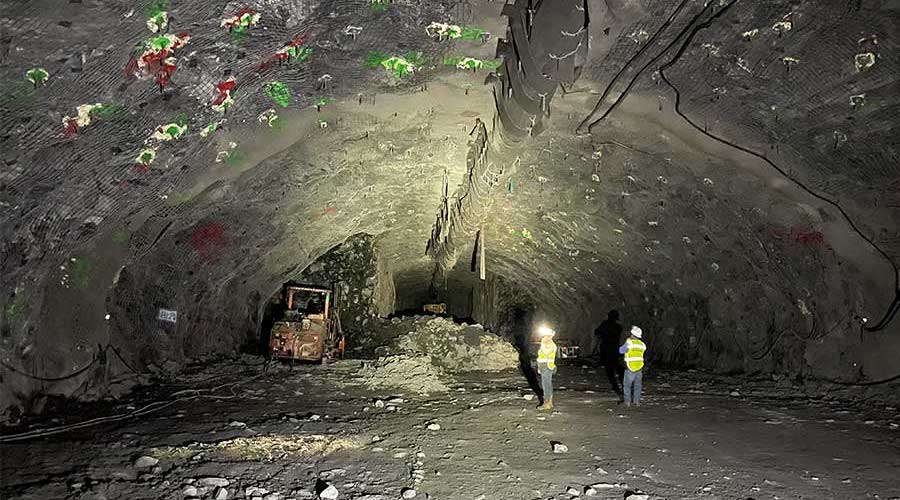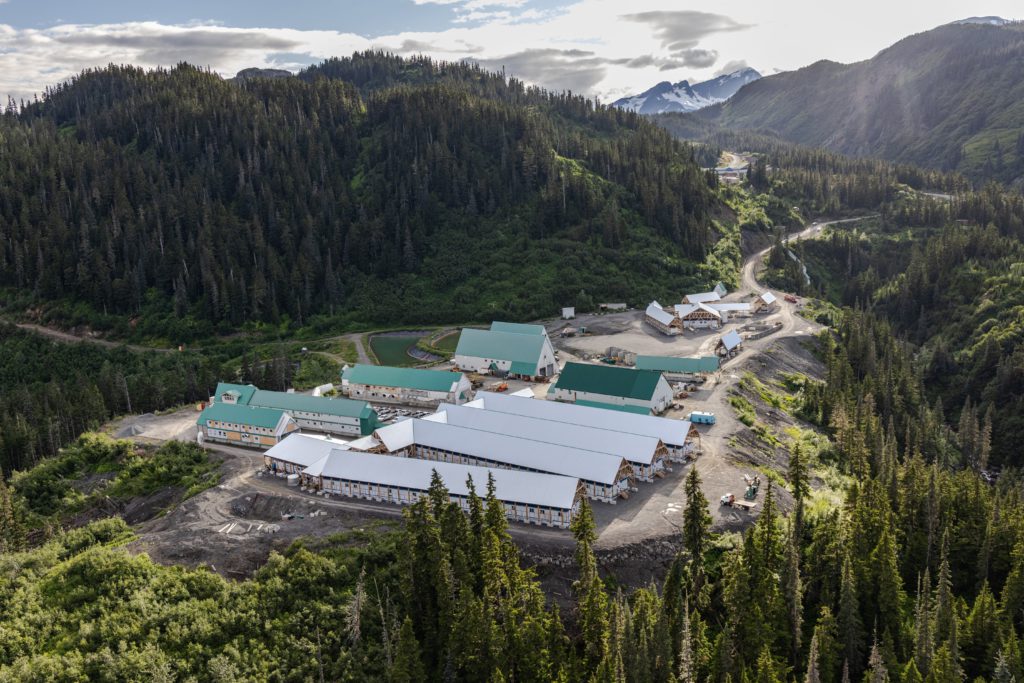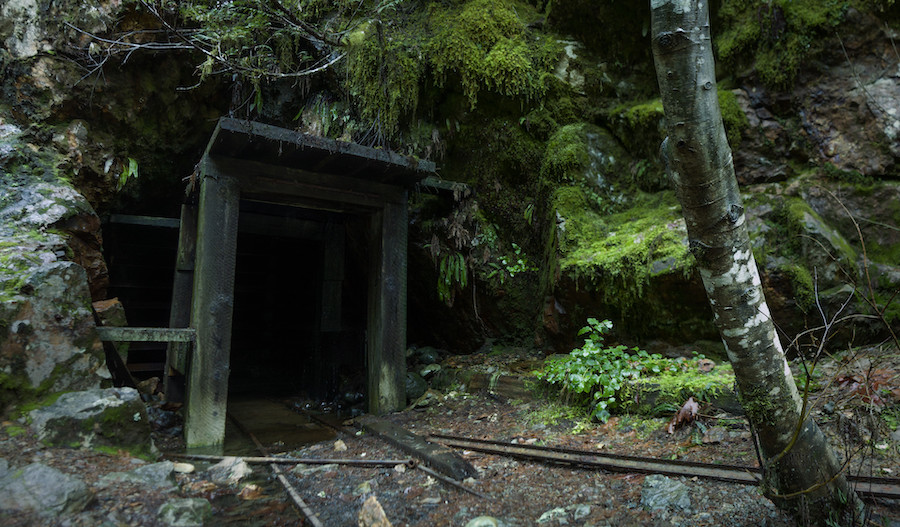Staff Writer | January 15, 2023 |

One of the caverns at the Deep Underground Neutrino Experiment.
Engineering challenges
Willhite noted that the engineering challenges of construction this far below the surface are formidable.
“Every bit of air that is underground has to come down through one shaft and go back out another shaft, and this requires management of air movement,” he said.
At the 4,850-foot level of SURF, the natural temperature of the surrounding rock walls is 95 degrees, so ventilation for air conditioning is key.
Water, on the other hand, cannot be taken for granted in the DUNE construction. Installing a bathroom, for example, requires pumping water between the surface and the construction site which, in turn, would require almost 2,200 psi of pressure. Thus, engineers have broken down the plumbing that supplies water into a series of stepped segments to reduce the pressure needed by individual pumps.
Heavy equipment like excavators and front-end loaders and construction materials like long steel beams that are normally a part of any construction operation are also hard to come by at DUNE.
“These massive caverns take huge equipment. But we are supplied by mine shafts that are not that much bigger than a normal elevator, and there is no piece of excavation equipment that will fit in an elevator, so we have to disassemble the equipment at the surface and reassemble it at depth,” Willhite said.
On top of this, the rock being excavated from these large caverns must be placed back on conveyances and moved to the surface.
Neutrino experiment
Inside DUNE, the US Department of Energy is building a facility that will hold massive tanks of liquid argon that will detect the neutrinos coming in from a beam generated at Fermilab in Illinois. At least two of the tanks are the size of five-story buildings and each will hold 17,000 tonnes of -300ºF liquid argon.
“To maintain that temperature, we use a large nitrogen generator and refrigeration system to create liquid nitrogen at -320°F,” Willhite said. The liquid nitrogen will be used to help cool the argon.
“Aside from the ridiculously cold temperature, when these liquids boil, they expand over 700 times their volume. There is nothing inherently hazardous about argon gas except it displaces any oxygen. We have to ensure that this expansion is minimized, controlled and ventilated properly for worker safety,” he pointed out.
For Willhite, the engineering challenges at DUNE are part of what makes it a fulfilling project.

One of the caverns at the Deep Underground Neutrino Experiment.
(Image courtesy of South Dakota Mines).
The former Homestake mine, the biggest and deepest gold mine in North America until its closure in 2002, is set to become one of the largest underground caverns in history and house the largest physics experiment in the study of neutrinos.

The site, located under the Black Hills of South Dakota, is expected to host the Deep Underground Neutrino Experiment (DUNE) project being developed within the Sanford Underground Research Facility (SURF) by the US Department of Energy’s Fermi National Accelerator Laboratory.
“The DUNE caverns are mind-bogglingly big. There is no question about it,” Joshua Willhite, one of the engineers leading the DUNE excavation and a graduate of the university South Dakota Mines, said in a media statement.
According to Willhite, two of the main caverns are seven stories tall, one football field and a half long and 64 feet wide. A third utility cavern is three stories high, two football fields long and 64 feet wide.
Even though there are other caverns of similar or larger size on the planet, they are closer to the surface. This means that nothing the size of DUNE has ever been done at depths of 4,850 feet below ground.
The former Homestake mine, the biggest and deepest gold mine in North America until its closure in 2002, is set to become one of the largest underground caverns in history and house the largest physics experiment in the study of neutrinos.

The site, located under the Black Hills of South Dakota, is expected to host the Deep Underground Neutrino Experiment (DUNE) project being developed within the Sanford Underground Research Facility (SURF) by the US Department of Energy’s Fermi National Accelerator Laboratory.
“The DUNE caverns are mind-bogglingly big. There is no question about it,” Joshua Willhite, one of the engineers leading the DUNE excavation and a graduate of the university South Dakota Mines, said in a media statement.
According to Willhite, two of the main caverns are seven stories tall, one football field and a half long and 64 feet wide. A third utility cavern is three stories high, two football fields long and 64 feet wide.
Even though there are other caverns of similar or larger size on the planet, they are closer to the surface. This means that nothing the size of DUNE has ever been done at depths of 4,850 feet below ground.
Engineering challenges
Willhite noted that the engineering challenges of construction this far below the surface are formidable.
“Every bit of air that is underground has to come down through one shaft and go back out another shaft, and this requires management of air movement,” he said.
At the 4,850-foot level of SURF, the natural temperature of the surrounding rock walls is 95 degrees, so ventilation for air conditioning is key.
Water, on the other hand, cannot be taken for granted in the DUNE construction. Installing a bathroom, for example, requires pumping water between the surface and the construction site which, in turn, would require almost 2,200 psi of pressure. Thus, engineers have broken down the plumbing that supplies water into a series of stepped segments to reduce the pressure needed by individual pumps.
Heavy equipment like excavators and front-end loaders and construction materials like long steel beams that are normally a part of any construction operation are also hard to come by at DUNE.
“These massive caverns take huge equipment. But we are supplied by mine shafts that are not that much bigger than a normal elevator, and there is no piece of excavation equipment that will fit in an elevator, so we have to disassemble the equipment at the surface and reassemble it at depth,” Willhite said.
On top of this, the rock being excavated from these large caverns must be placed back on conveyances and moved to the surface.
Neutrino experiment
Inside DUNE, the US Department of Energy is building a facility that will hold massive tanks of liquid argon that will detect the neutrinos coming in from a beam generated at Fermilab in Illinois. At least two of the tanks are the size of five-story buildings and each will hold 17,000 tonnes of -300ºF liquid argon.
“To maintain that temperature, we use a large nitrogen generator and refrigeration system to create liquid nitrogen at -320°F,” Willhite said. The liquid nitrogen will be used to help cool the argon.
“Aside from the ridiculously cold temperature, when these liquids boil, they expand over 700 times their volume. There is nothing inherently hazardous about argon gas except it displaces any oxygen. We have to ensure that this expansion is minimized, controlled and ventilated properly for worker safety,” he pointed out.
For Willhite, the engineering challenges at DUNE are part of what makes it a fulfilling project.











